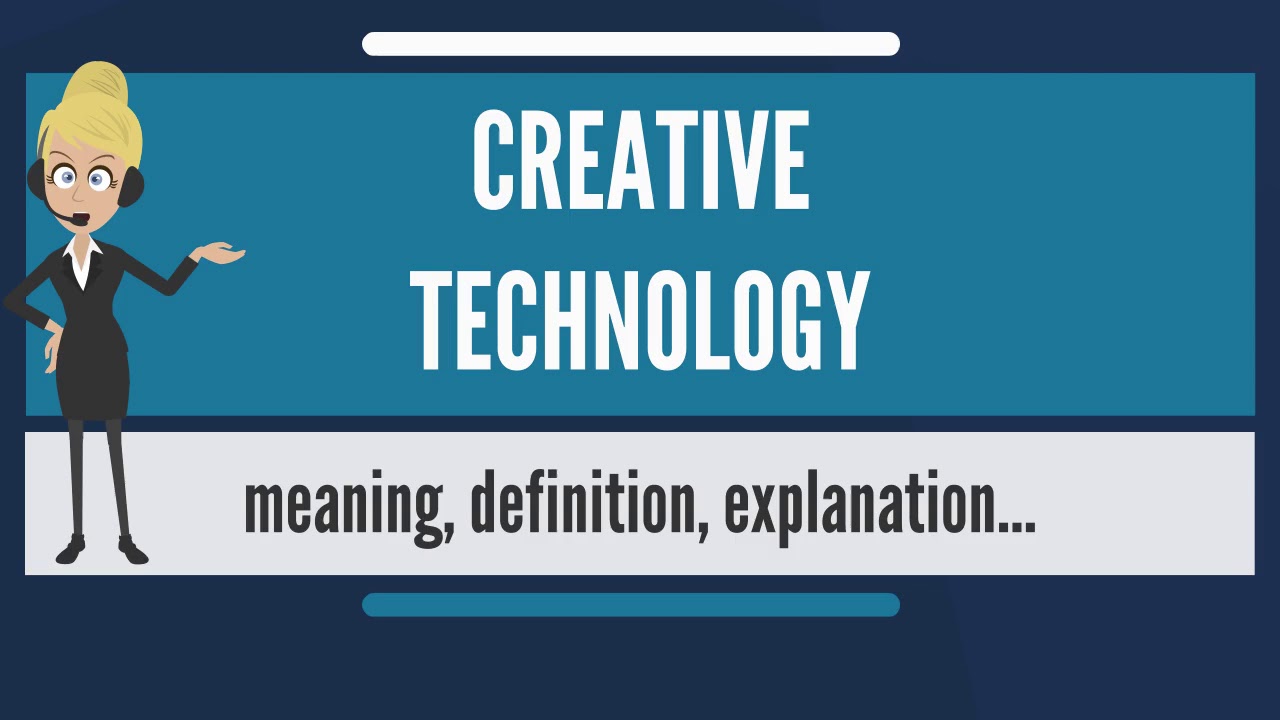✪✪✪✪✪ http://www.theaudiopedia.com ✪✪✪✪✪
What is CREATIVE TECHNOLOGY? What does CREATIVE TECHNOLOGY mean? CREATIVE TECHNOLOGY meaning – CREATIVE TECHNOLOGY definition – CREATIVE TECHNOLOGY explanation.
Source: Wikipedia.org article, adapted under https://creativecommons.org/licenses/by-sa/3.0/ license.
SUBSCRIBE to our Google Earth flights channel – https://www.youtube.com/channel/UC6UuCPh7GrXznZi0Hz2YQnQ
Creative technology is a broadly interdisciplinary and transdisciplinary field combining Computing, Design, Art and the Humanities. The field of Creative Technology encompasses art, product design, digital media or an advertising and media made with a software-based, electronic and/or data-driven engine. Examples of creative technology include multi-sensory experiences made using computer graphics, video production, digital cinematography, virtual reality, augmented reality, video editing, software engineering, 3D printing, the Internet of Things, CAD/CAM and wearable technology. In the art world, new media art, and internet art are examples of work being done in the Creative Technology field. Performances, interactive installations and other immersive experiences take museum-going to the next level and may serve as research processes for humans’ artistic and emotional integration with machines. Some believe that “Creativity has the potential to be revolutionised with technology”, or view the field of Creative Technology as helping to “disrupt” the way people today interact with computers, and usher in a more integrated, immersive experience.
Creative technology facilities may be organized as arts, research or job development entities, such as the UK’s Foundation for Art and Creative Technology which has presented hundreds of new media and digital artworks from around the world, or a recently established $20.5M project in Hawaii specializing in film industry job training and workforce development programs which plans to offer robotics, computer labs, recording studios and editing bays, pitched as a “game-changing” opportunity to bring new skills and jobs to Kauai. Degrees in this field were designed to address needs for cross-disciplinary interaction and aim to develop lateral thinking skills across more rigidly defined academic areas. Some educators have complained that creative technology tools, though “widely available”, are difficult to use for youth populations.
The first major corporation to have a corporate officer bearing the title Creative Technology was The Walt Disney Company, which gave it first to the Imagineer, Bran Ferren in 1993, who eventually became Disney’s president of Creative Technology in 1998. At about the same time, the first educational research center in the United States was created to bridge these disciplines across Industry, Academia, and the Defense communities, designated the University of Southern California’s, Institute for Creative Technologies. The ICT was established with funding by the US Army.
Marketers and advertisers are also looking toward the power of creative technology to re-engage customers. The UK’s Marketing Agencies Association is promoting creative technology as a way to build a more connected and personalized engagement with prospective customers, which launched a Creative Technology Initiative in early 2015. Industry associations and developers, arts organizations and agency creatives alike call for more investment in technology, which has lagged behind the sea change in the industry that is introducing more tech into creative fields. Many ad agencies and other businesses have begun to create internal labs for research in creative technology. For example, Unilever created their Foundry Project as a way for their company to “embrace the mentality of hacking, deploying and scaling”; they share their discoveries and view the lab as a way to incorporate technology into the company, drive experimentation and engage with strategic partners. The Adobe Creative Technologies lab collaborated with the MIT Media Lab, one of the most notable endeavors in the creative technology field, to give artists the ability to draw geometric designs with a computer without having to master text-based programming or math.
Creative technology is best seen as the intersection of new technology with creative initiatives such as fashion, art, advertising, media, and entertainment. As such it is a way to make connections between countries seeking to update their culture; a winter 2015 Forbes magazine article tells of 30 creative technology startups from the UK making the rounds in Singapore, Kuala Lampur and New York City in an effort to raise funds and make connections.
source




